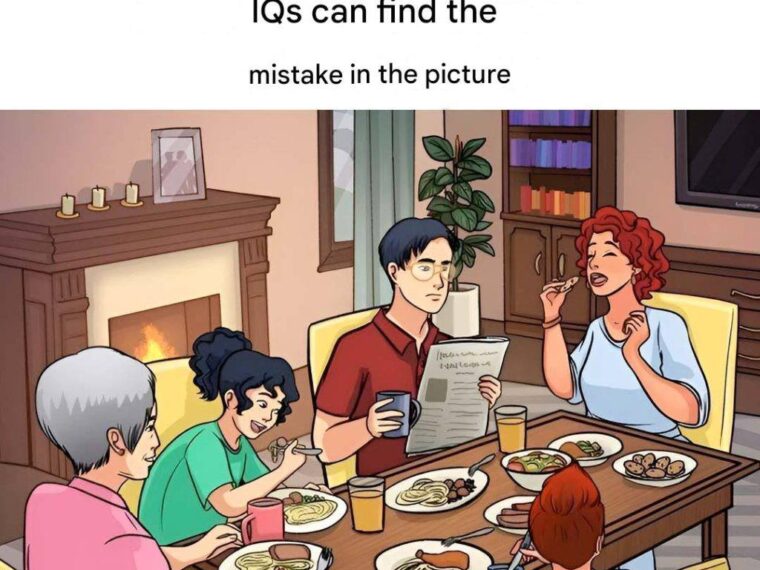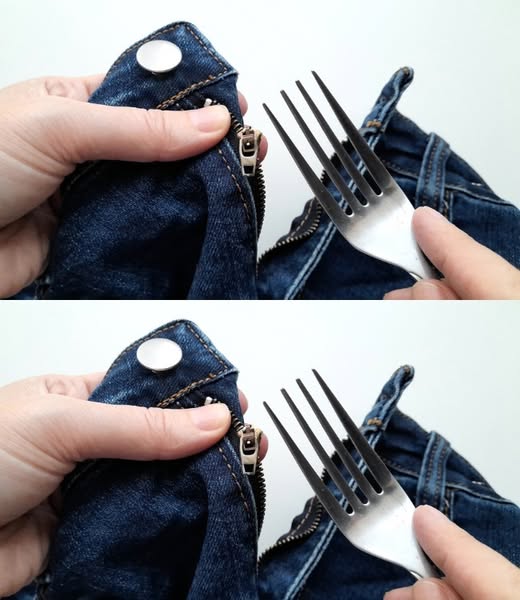Not all visual puzzles are created equal. A good puzzle strikes a balance between familiarity and strangeness—it should look realistic enough to seem ordinary at first glance, but include a single detail that contradicts that assumption.
In this case, the family dinner image meets all those criteria:
- Common setting: A family meal, something we can all relate to.
- Subtle mistake: A child using the wrong utensil.
- Logical dissonance: Our brains know it’s not right, even if we can’t immediately say why.
- Quick engagement: The puzzle invites immediate interaction—“Can you find the mistake?”
This type of puzzle also invites social engagement. Many people love sharing them with friends or family to compare who can spot the mistake fastest.
Similar Puzzles You Might Enjoy
If you enjoyed this challenge, here are a few more puzzles in the same style:
- Find the Hidden Object: Can you locate a small object that doesn’t belong in a busy scene?
- Spot the Difference: Compare two seemingly identical images and find five differences.
- What Happens Next? (Prediction Puzzle): Given a scenario, can you predict the next logical step?
- Odd One Out: Which item doesn’t belong in the group?
These types of visual challenges not only entertain but also help develop critical thinking, patience, and visual acuity.
How to Improve Your Observation Skills
Think you’re not good at spotting these types of errors? Here are some tips to boost your observation skills:
- Slow Down: Take a few extra seconds to look at the image systematically, not just as a whole.
- Scan Strategically: Divide the image into sections and inspect each part thoroughly.
- Question the Norms: Ask yourself, “Does this make sense?” or “Would this happen in real life?”
- Practice Often: Like any mental muscle, observation improves with regular training.
- Use All Your Senses: While this is a visual puzzle, being more aware in your day-to-day life can help improve your overall attentiveness.
Final Thoughts: Why We Love These Puzzles
There’s a reason spot-the-difference and “what’s wrong” puzzles have stood the test of time—they tap into something fundamental about human cognition. We enjoy the feeling of solving a mystery, uncovering hidden details, and proving to ourselves (and others) that we’re observant.
Whether you solved it in under 10 seconds or needed a little help, the important part is that you challenged your brain, had fun, and maybe learned something new about how you see the world.
So next time you’re sitting down for dinner—take a quick look at your utensils. Who knows, maybe someone’s mixing mashed potatoes with a knife right in front of you.
Thanks for playing along!
If you enjoyed this puzzle, don’t forget to share it with friends or check out our growing collection of brain teasers, riddles, and logic puzzles.
📌 Bookmark us for more weekly challenges and mental exercises!





